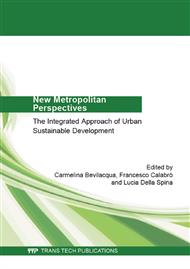p.402
p.410
p.417
p.424
p.433
p.443
p.447
p.452
p.458
An Integrated Methodology for the Identification of Agricultural Districts: A Case Study in Calabria
Abstract:
The reorganization processes within the rural areas have generated the most modern networks of relationships among agriculture, industry and service sector. Therefore, in the last decades the analysis of such areas has dealt with theories concerning agglomeration economies. In a new perspective, the protagonist of which is a multifunctional agriculture, there has been an increase in the number of actors present in the processes of planning and implementation of European rural policies. In this way, it has been possible to generate forms of local governance such as the Local Action Groups (LAGs), within the Community Leader Initiative, or other forms of governance according to the several adopted instruments of integrated planning. In Italy, inspired by the pattern of industrial districts, the Legislative Decree 228/2001 has disciplined agricultural districts. The methodology for the identification of the districts in agriculture can follow either a top-down (quantitative) approach or a bottom-up (qualitative) one. The study proposes a quali-quantitative methodology to check the vocationality to agricultural district of a large area in the province of Reggio Calabria. The results of the research show a homogeneous and cohesive area around the agro-food sector, above all in terms of employment.
Info:
Periodical:
Pages:
433-440
Citation:
Online since:
June 2014
Authors:
Permissions:
Share:
Citation:


